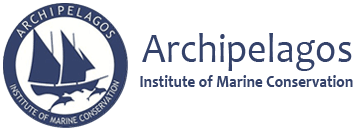
The GIS team at Archipelagos has the incentive to carry out large projects, where the GIS interns, in loco, need to collaborate and work as a team rather than on individual tasks. I reached the island of Lipsi at the beginning of July, just after the Greek Covid-19 lockdown, and I spent almost my entire time with only one other GIS colleague, Patrick Flückiger from Switzerland.
Ecological mooring project

Among others anthropogenic impacts, Posidonia oceanica is threatened by the increasing number of leisure boats anchoring in rather shallow water (depth less than 40 meters), where the seagrass meadows are located. To avoid the damage of anchoring over Posidonia (which can contribute to unthinkable damage), Archipelagos is working on installing permanent and ecological mooring systems in several target bays of Lipsi island. Our task was therefore to provide very detailed maps showing the distribution of Posidonia oceanica and the bathymetry in such bays.
Patrick and I spent our first weeks performing data collection on the field. We made use of kayaks equipped with sonar technology to detect seagrass presence/absence. Since we needed very high accuracy, we did not make use of satellite images as current resolutions are not good enough. Therefore, we opted on designing very dense transects for the kayak, with less than 20 meters space between the lines, and we ran interpolation methods on the processed sonar data to generate our distribution maps. QGIS was used for all these purposes.
In order to obtain even more accurate maps, drone images can be used in combination with sonar data, by using image classification algorithms. Unfortunately, time limitations and a very windy summer forced us to postpone this idea.
Data analysis on python

In conclusion, from a GIS team perspective, Archipelagos gave us the opportunity to contribute to a project in its entirety, from data collection and analysis to conclusions, with the possibility to use gears and equipment, such as the sonar, and with a well prepared supervisor.
Corrado Motta
MSc student, Sea & Society at University of Gothenburg, Sweden,
On-site intern at the GIS team of Archipelagos Institute



